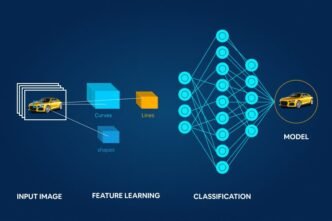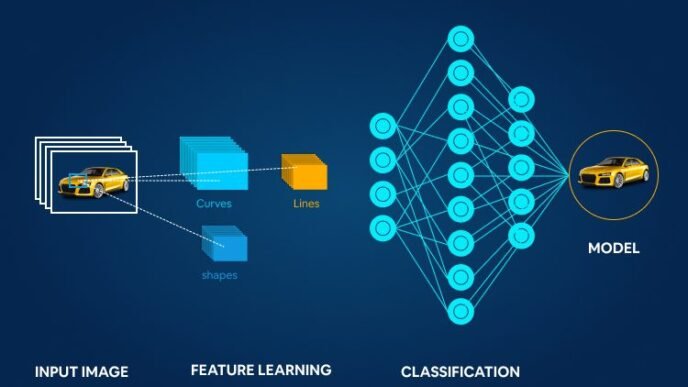Missing values are a common challenge in data analysis and can significantly impact the results of machine learning models, statistical analysis, and overall data integrity. Handling missing values effectively is crucial to ensure the quality of your analysis. Below, we explore several methods to manage missing data, including deletion, imputation, and advanced techniques, along with practical examples, pros and cons, and real-world scenarios where these methods are frequently used.
Deletion Methods:
1. Listwise Deletion (Complete Case Analysis)
In listwise deletion, you remove rows or columns that contain any missing values. This is one of the simplest methods for handling missing data.
Example:
If a DataFrame has missing values in 3 out of 100 rows, you remove these rows entirely.
# Remove rows with any missing values
df_cleaned = df.dropna()
Pros:
•Simple and easy to implement.
•Doesn’t introduce bias in the data if the missingness is random.
Cons:
•Leads to loss of valuable data, especially when missing values are widespread.
•Reduces the sample size, which can weaken the power of statistical analysis.
Real-World Scenario:
Listwise deletion is commonly used in surveys or questionnaires where respondents may leave a few questions blank. However, it is only suitable when the amount of missing data is small.
2. Pairwise Deletion
Rather than removing entire rows, pairwise deletion removes only the specific pairs of observations that contain missing values. This method allows you to retain more data compared to listwise deletion.
Example:
If a dataset contains missing values in certain variables but not in others, pairwise deletion allows you to perform analysis on non-missing pairs.
# Pairwise deletion can be achieved through specific analysis methods in stats libraries
Pros:
•Retains more data compared to listwise deletion.
•Allows you to use more data in analysis where only some variables are missing.
Cons:
•Can lead to biased results if the missing data is not random.
•May produce inconsistent sample sizes across different analyses.
Real-World Scenario:
Pairwise deletion is often used in correlation analysis or regression where missing data occurs in a few variables, but most data points remain complete.
Imputation Methods:
1. Mean/Median/Mode Imputation
Mean, median, and mode imputation replace missing values with the respective statistic of the column. This is an easy and widely-used technique for numeric and categorical data.
Example:
Imputing missing values with the mean:
# Replace missing values with the mean for numeric data
df['age'].fillna(df['age'].mean(), inplace=True)
Pros:
•Simple and quick to implement.
•Retains dataset size and works well with small amounts of missing data.
Cons:
•Can introduce bias if the data distribution is skewed.
•Reduces variability in the dataset and can distort statistical properties.
Real-World Scenario:
Mean/median/mode imputation is often used in datasets where missing values are few and randomly distributed, such as test scores in educational datasets.
2. Regression Imputation
Regression imputation uses the relationships between variables to predict missing values. It fits a regression model where the missing value is the dependent variable and other available features act as predictors.
Example:
Predict missing values using regression:
from sklearn.linear_model import LinearRegression
# Fit regression model to predict missing values
Pros:
•Can be more accurate than simple imputation methods by leveraging relationships between variables.
•Preserves variability in the data.
Cons:
•Sensitive to model assumptions, such as linearity.
•Can lead to overfitting if the imputation model is not robust.
Real-World Scenario:
Regression imputation is commonly used in healthcare datasets to estimate missing lab results based on other patient information such as age, weight, and medical history.
3. K-Nearest Neighbors (KNN) Imputation
KNN imputation replaces missing values with the mean or median value of the k-nearest neighbors (based on Euclidean distance) of that observation.
Example:
from sklearn.impute import KNNImputer
imputer = KNNImputer(n_neighbors=5)
df_filled = imputer.fit_transform(df)
Pros:
•Takes into account the similarity between observations.
•Works well for both continuous and categorical data.
Cons:
•Computationally expensive, especially with large datasets.
•Sensitive to the choice of the number of neighbors (k).
Real-World Scenario:
KNN imputation is frequently used in retail datasets where customer data like purchasing habits may be incomplete. It can estimate missing values based on the similarity of customers.
4. Multiple Imputation
Multiple imputation involves creating several imputed datasets, each with different plausible values for the missing data. These datasets are then analyzed separately, and the results are pooled to account for uncertainty in the imputation process.
Example:
from sklearn.experimental import enable_iterative_imputer
from sklearn.impute import IterativeImputer
# Create multiple imputations
imputer = IterativeImputer()
df_filled = imputer.fit_transform(df)
Pros:
•Accounts for uncertainty and variability in the missing data.
•Reduces the bias associated with single imputation techniques.
Cons:
•More complex and computationally intensive.
•Requires specialized software or libraries.
Real-World Scenario:
Multiple imputation is often used in longitudinal studies or clinical trials where it is crucial to maintain the integrity of the analysis despite missing data.
Other Methods:
1. Hot Deck Imputation
In hot deck imputation, missing values are filled with values from similar observations. This method involves identifying similar records and using them to fill in the gaps.
Pros:
•Maintains the distribution and relationships in the dataset.
•Works well when similar observations are readily available.
Cons:
•Can be subjective depending on the definition of similarity.
•Not suitable for large datasets where finding similar observations is difficult.
2. Cold Deck Imputation
Cold deck imputation uses a fixed value or constant to replace missing values. For instance, a missing value for a gender column could be replaced with “Unknown” or “Not Provided.”
Pros:
•Simple to implement.
•Useful for missing categorical data.
Cons:
•Can introduce bias if applied arbitrarily.
•Not suitable for continuous data.
Choosing the Right Method
When choosing a method to handle missing values, it is important to consider:
1. Amount of Missing Data:
•If the amount of missing data is small, deletion methods may be preferable.
•If a significant portion of data is missing, imputation methods are generally better to avoid information loss.
2. Distribution of the Variable:
•For skewed distributions, median imputation may be better than mean imputation.
•If outliers exist, mean imputation may distort the data’s central tendency.
3. Relationships Between Variables:
•Regression and KNN imputation leverage relationships between variables, making them effective when strong correlations exist.
4. Impact on Analysis:
•Different methods can affect your analysis in various ways. For example, deleting rows reduces the sample size, while imputation methods introduce new data that could affect the variance and bias of your results.
Conclusion
Handling missing values is a critical step in data preprocessing, and selecting the right approach depends on the specific characteristics of your dataset. Simpler methods like mean/median imputation can be quick fixes, but more advanced methods like KNN or multiple imputation can provide more robust results. It’s crucial to understand the underlying data, its distribution, and the relationships between variables before choosing a method.
Further Exploration:
•Dealing with Missing Data in Pandas
•Scikit-Learn Imputation Strategies
•Multiple Imputation: A Primer
•KNN Imputation for Missing Data
By mastering these techniques, you can effectively manage missing data and ensure that your analyses and models are reliable and accurate, regardless of missing values in your dataset.












